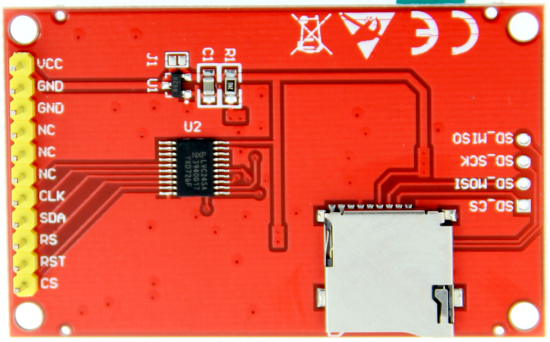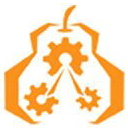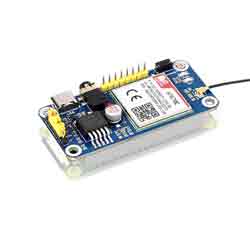- sales/support
Google Chat: zj734465502@gmail.com
- sales
+86-0755-88291180
- sales01
sales@spotpear.com
- sales02
dragon_manager@163.com
- support
tech-support@spotpear.com
- CEO-Complaints
zhoujie@spotpear.com
- sales/support
WhatsApp:13246739196
- HOME
- >
- ARTICLES
- >
- Common Moudle
- >
- LCD
1.8inch TFT display User Guide
Product Description
- 1.8-inch color screen,support 65K color display,display rich colors
- 128X160 resolution, clear display
- Using the SPI serial bus, it only takes a few IOs to illuminate the display
- With SD card slot for convenient function expansion
- Provide underlying libraries and rich sample programs for Arduino, C51, and STM32 platforms
- Military-grade process standards, long-term stable work
- Provide underlying driver technical support
Product Parameters
| Name | Parameter |
| Display Color | 16BIT RGB 65K color |
| SKU | MAR1801 |
| Screen Size | 1.8(inch) |
| Type | TFT |
| Driver IC | ST7735S |
| Resolution | 128*160 (Pixel) |
| Module Interface | 4-wire SPI interface |
| Backlight | 2 White Led |
| Active Area | 28.03x35.04 (mm) |
| Module PCB Size | 38.30x62.48 (mm) |
| Operating Temperature | -20℃~60℃ |
| Storage Temperature | -30℃~70℃ |
| Operating Voltage | 5V/3.3V |
| Power Consumption | TBD |
| Rough Weight(Package containing) | 18 (g) |
Interface Definition

| Serial number | Pin label | Description |
| 1 | VCC | LCD power supply positive (3.3V ~ 5V) |
| 2 | GND | LCD power supply |
| 3 | GND | LCD power supply |
| 4 | NC | None definition, retain |
| 5 | NC | None definition, retain |
| 6 | NC | None definition, retain |
| 7 | CLK | LCD screen SPI bus clock signal |
| 8 | SDA | LCD screen SPI bus write data signal |
| 9 | RS | LCD register / data selection signal, low level: register, high level: data |
| 10 | RST | LCD recharge signal, low level reset |
| 11 | CS | LCD screen selection signal, low level enable |
Connection Arduino

How to use on Arduino
- Step 1: Download the test program
- Download the Arduino test program from the program download bar
- For related test program descriptions, please refer to the test program description documents in the program package
- Step 2: Connect the Arduino development board
- Plug the module straight into the Arduino development board
- After the module is plugged in, power on the Arduino development board
- Step 3: Copy dependent libraries
- Make sure that Arduino IDE has been installed on the computer (if not installed: Arduino IDE download website)
- After installing the Arduino IDE, you need to copy the dependent libraries to the Arduino project directory, as follows:
- (1) Unzip the downloaded test package
- (2) Copy the dependent libraries in the Install libraries directory of the program package (as shown in the figure below) to the libraries folder of the Arduino project directory (Arduino project directory)

- Step 4: Compile and download the program to the development board
- Open the sample to be tested in the Example directory of the package, compile and download (compile and download)
- Step 5: Observe the operation of the program
- After the program is downloaded, run it directly and observe the running status. If it can be displayed normally, the program has run successfully, as shown in the following figure (take the colligate_test test program as an example):


TAG:
Raspberry Pi 5
Raspberry Pi 5 PCIe to M.2 NVMe SSD Adapter Board C HAT Pi5-PCIe-2280-2242-2230
ESP32 S3 Development Board 1.85 inch Round LCD Display 360×360 QMI8658 Sensor / MIC / SD /MP3 Audio /Battery Port LVGL/HMI For Arduino
Raspberry Pi RP2040 Camera
MPS2.5G Raspberry Pi 5 PCIe to NVME SSD And 2.5G Ethernet RJ45 HAT RTL8125 2280 2242 2230
ESP32-S3 1.69inch Touchscreen LCD Round Display WiFi Bluetooth With QST Attitude Gyro Sensor QMI8658
Raspberry Pi 5 PCIe to 4-CH M.2 NVMe 4-Ports SSD Board HAT Pi5 Four-Times
Luckfox Pico Max
ESP32 S3 Development Board 2.41 inch AMOLED Display 600x450 TouchScreen For Arduino LVGL With SD-Port/ QMI8658C 6-Axis Sensor
Banana Pi
ADXL354C Sensor
EchoEar ESP32 S3 AI Development Board with 1.85-inch LCD Display Cute Cat Pet Chatting Robot N32R16
spotpear
Python HTTP Request Communication
Raspberry Pi 13.3 inch FHD AMOLED 1080P Capacitive TouchScreen Display Type-C/HDMI For Computer PC
Raspberry Pi Pico 2 RP2350 1.28 inch Round LCD TouchScreen Development Board 240x240 Display QMI8658 6-Axis $17.9
Milk V Duo IO Board
LCD1602 I2C Module PWM Adjustable backlight 3.3V/5V For Arduino/ Raspberry Pi/ Pico/ Jetson Nano/ ESP32
Raspberry Pi Camera
Raspberry Pi 5 RTC Battery
TAG:
LoRa32 ESP32 OLED 0.96 inch Paxcounter Disaster-Radio CH9102 SX1278 SX1276 LILYGO TTGO
LuckFox
ESP32 S3 2 inch LCD Display Camera
PI5 Case
ESP32 S3 Development Board 1.75 inch AMOLED Display TouchScreen SD slot 6-axis sensor Deepseek
SpeedyBee F405 V3 BLS 60A FC ESC Stack Flight Controller DJI FPV Drone
VisionFive2 Cooling
10 Axis DOF ROS IMU Sensor Accelerometer Gyroscope Magnetometer Temperature Pressure
Raspberry Pi 10.1 inch DSI LCD TouchScreen Display 800x1280 RK3576 RK3506 ESP32-P4 Luckfox Lyra
Industrial Modbus POE ETH Relay 30CH RTU Modbus TCP-Ethernet Digital Input PoE Power IOT
Raspberry Pi Pico 2 RP2350 Tiny Kit
ESP32-S3 ST7789
Raspberry Pi Pico 2 RP2350B 2.8 inch LCD Development Board RGB Display Round TouchScreen 480x480 LVGL QMI8658 / SD / RTC
Raspberry Pi5 PCIe M.2 NVMe SSD Box Case All Ports To Pi's USB Side
Raspberry Pi Zero RJ45
Raspberry Pi display
Raspberry Pi 5 Argon NEO 5 M.2 NVME PCIE Case Pi5
Raspberry Pi 500+ plus Personal computer Mechanical Keyboard With official SSD and Programmable RGB
Raspberry Pi
Raspberry Pi 5 Copper Heatsink Option Fan or No-Fan




